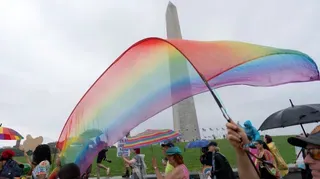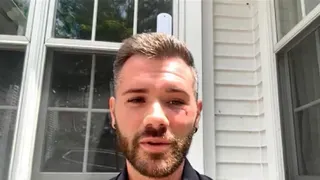November 19, 2015
Minneapolis Police Shooting Puts Spotlight on Racial Tension
Amy Forliti READ TIME: 3 MIN.
The fatal shooting of an unarmed black man by a Minneapolis police officer has pushed racial tensions in the city's small but concentrated minority community to the fore, with a police precinct besieged by a makeshift encampment and hundreds of protesters in recent days.
Police have tried to improve race relations in recent years, and succeeded in some areas. But some community activists say racial disparities - high unemployment rates for blacks, a disproportionate number of arrests for minor crimes and inequities in housing and the school system - have been going on for so long that Sunday's shooting of Jamar Clark, and the reaction from the community, was no surprise.
"We call Minneapolis a tale of two cities: The best of times if you're white, and worst of times if you're black," said Nekima Levy-Pounds, president of the Minneapolis chapter of the NAACP, and one of 42 people arrested when protesters shut down an interstate highway Monday night.
Protests have continued since then, with tensions escalating again Wednesday night as a crowd outside the precinct office near where Clark was shot grew. Police at one point used a chemical irritant to control the crowd, and a chemical spray was also directed at officers, police spokesman John Elder said.
Police later reported that several officers sustained minor injuries from rocks and water bottles that were thrown and said several squad cars were damaged.
Clark, 24, was shot in the head during a confrontation with two officers. Police said he was a suspect in an assault and was interfering with paramedics trying to treat the victim. Police said there was a scuffle, and Clark was shot.
Some people who say they saw the shooting claim Clark wasn't struggling and was handcuffed. Police initially said he wasn't handcuffed, and the president of the Minneapolis police union, Lt. Bob Kroll, told The Associated Press on Wednesday that Clark was "disarming" the officer and was not handcuffed. The state agency that's investigating the shooting, the Bureau of Criminal Apprehension, said one of the things it's looking at is whether Clark was restrained.
The officers involved in the shooting were identified Wednesday as Mark Ringgenberg and Dustin Schwarze, both with seven years of experience including 13 months with the Minneapolis department. Their race wasn't released because it's private under state law. Police in Maple Grove, where Ringgenberg worked before joining the Minneapolis force, said he is white.
Members of the Minneapolis chapter of Black Lives Matter and other demonstrators want police to release video of the shooting, but the BCA has declined to do so, saying it would taint the investigation. The FBI is also undertaking a civil rights investigation.
The shooting took place on Minneapolis' north side, where the population is predominantly black and generally poorer than the rest of the city. The four neighborhoods nearest the shooting are 53 percent black, according to 2010 census data. The city as a whole is 60 percent white.
Chuck Samuelson, executive director of the American Civil Liberties Union in Minnesota, said tension has risen as police have stepped up their presence in high-crime areas. An ACLU study earlier this year found black people are nearly nine times more likely to be arrested for low-level offenses in Minneapolis than white people.
"African-American males feel like they are targeted by police because, frankly, they are," Samuelson said.
Levy-Pounds said several high-profile cases have increased mistrust of police, including the 2013 death of Terrance Franklin, who was black.
Franklin was being chased by police in a suspected burglary when he broke into a home. Police said he struggled with officers, grabbing a police weapon and shooting and wounding two officers before he was shot 10 times. A grand jury cleared officers in his death, but Levy-Pounds called it "a case of murder of a young African-American man at the hands of Minneapolis police."
Don Samuels, a black former City Council member who represented the north side, said there's a sense of wariness anytime a black man is shot by police, and people wonder if a white man in the same situation would have been shot. But he pointed to a growing effort by the city and police to confront racial issues head on, to bring more officers of color on the force, and to create review boards to deal with police brutality.
Minneapolis police Deputy Chief Medaria Arradondo said the department and is working hard to build trust.
"Even in the midst of protests and demonstrations, we will continue to have important dialogue and conversations to keep moving forward," he said.






